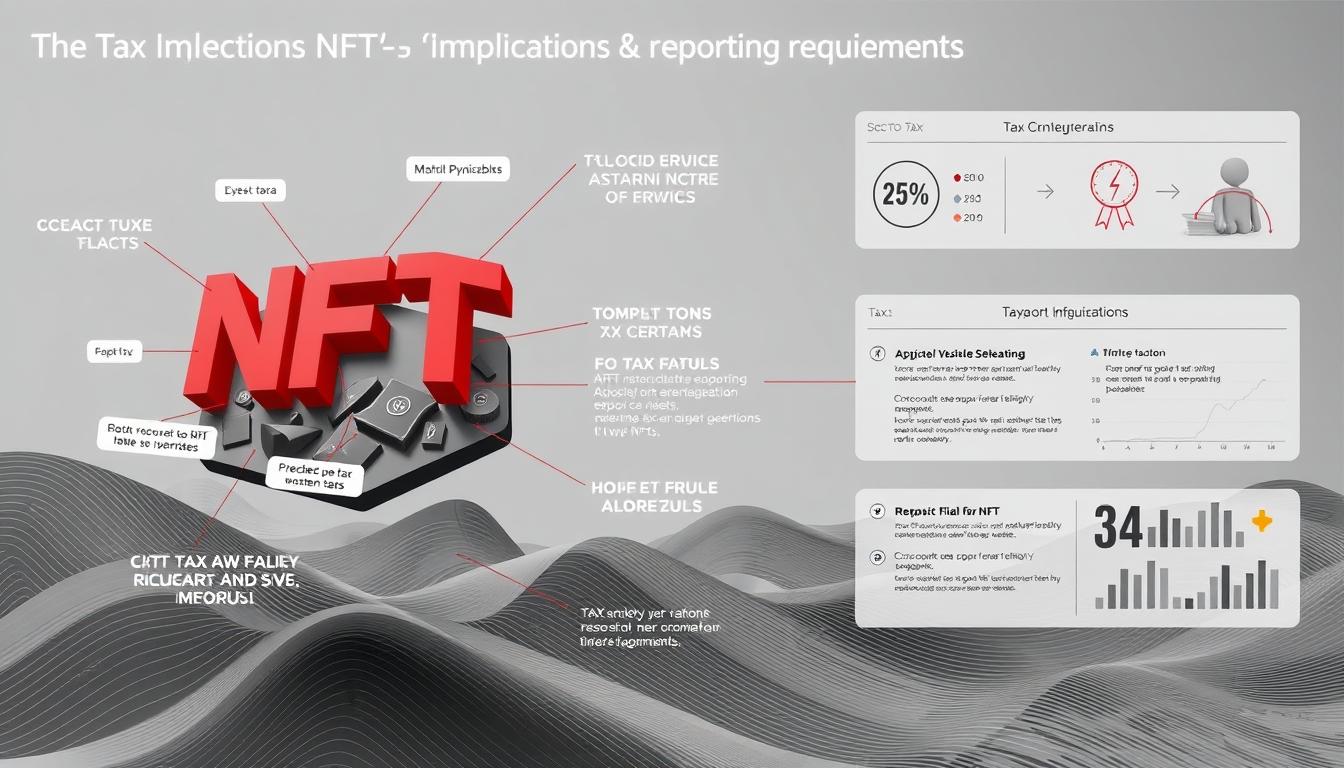Now Reading: AI Crypto Token Staking Rewards and Yields Explained
- 01
AI Crypto Token Staking Rewards and Yields Explained
AI Crypto Token Staking Rewards and Yields Explained

This introduction lays out what smart, automated staking means for U.S. users who want passive income from blockchain networks. We define how artificial intelligence improves validator choice, fee handling, and compounding while keeping security top of mind.
Crypto staking is not mining. It uses tokens to secure networks through delegation to a platform or validator. That process creates periodic rewards in cryptocurrency that support long-term growth strategies.
Expect varied yields: performance depends on network conditions, tokenomics, and platform features. Headline figures are estimates, not guaranteed interest.
Later sections will compare top platforms, show how staking works on major blockchains, highlight wallet integration, and offer practical strategies for compounding and risk-aware growth.
Key Takeaways
- Automated validator selection can boost returns while managing security.
- Staking differs from mining; it uses delegation to earn periodic cryptocurrency rewards.
- Yields vary by platform, network health, and tokenomics—figures are estimates.
- Wallet and custody choices matter for safe, long-term participation.
- The guide covers platforms, process steps, and risk-adjusted strategies for U.S. users.
What AI-driven staking means today and why it matters for passive income
Automated decision tools now handle validator choice, fee checks, and network health at scale.
How it simplifies the staking process: Automation allows users to set preferences while the system selects validators, estimates staking rewards, and monitors a blockchain for issues. This reduces hands-on oversight and helps maintain a secure network.
Platform-level benefits: Anomaly detection flags validator downtime. Dynamic fee awareness and smart delegation move tokens between pools to help users earn rewards with fewer operational steps.
Why this matters for passive income: These tools can suggest compounding schedules, restake timing, and token allocation across networks to support steady growth. Wallets integrate dashboards to show current rewards, pending payouts, and performance versus benchmarks.
- Security alerts can flag misbehavior or slashing risk for faster action.
- Liquidity suggestions match user profiles for flexible versus locked options.
- Standardized metrics make comparing platforms and pools easier.
| Feature | Benefit | User Impact |
|---|---|---|
| Validator selection | Data-driven picks | Higher uptime, lower manual work |
| Anomaly detection | Faster alerts | Reduced slashing risk |
| Fee optimization | Dynamic adjustments | Improved net returns |
| Dashboard integration | Unified metrics | Clearer decisions for users |
Best AI platforms in 2025 for optimized staking rewards and cloud mining returns
Leading platforms in 2025 pair smart systems with real-world hardware to boost uptime and net returns. Below are concise profiles to help U.S. users compare contracts, fees, and key features across providers.

ETNCrypto — AI-managed hardware, transparent contracts, and energy optimization
ETNCrypto runs managed mining centers with energy optimization and clear Australian contracts. Example short-term contracts show structure and daily profit: Antminer S19 XP Free — $100 for 1 day ($1.50/day); Antminer T21 — $200 for 2 days ($6.00/day); Antminer Z15 Pro — $600 for 3 days ($19.20/day).
Higher tiers include Antminer S21 Pro at $1,300 for 5 days ($45.50/day) and VolcMiner D1 at $17,800 for 5 days ($854.40/day). These offers illustrate how hardware choice affects returns and fees.
NiceHash — AI-driven pricing with flexible hashpower marketplace
NiceHash adjusts hashpower prices in real time and supports multiple coins with conversion to Bitcoin payouts. Users see transparent fees and can pick pools for flexible compute rental.
BitDeer — AI-assisted rig allocation and performance monitoring
BitDeer partners with Bitmain to allocate rigs based on network conditions. Real-time dashboards show uptime and earnings so users evaluate returns and contract terms.
ECOS — AI recommendations across staking pools and mining contracts
ECOS matches risk profiles to pools and contracts, offers an integrated wallet, and emphasizes energy-conscious facilities for users focused on security and long-term returns.
Hashing24 — Predictive maintenance for consistent uptime
Hashing24 leverages predictive maintenance tied to BitFury farms. Long-term contracts and stable payouts help smooth variance from network swings.
StormGain — Mining integrated with trading
StormGain links cloud mining to a trading app so mined balances can be traded instantly, letting users deploy strategies within one platform experience.
Quantumcloud — Monetize idle devices with automatic coin selection
Quantumcloud lets users earn by sharing spare computer or phone capacity. Automatic coin selection simplifies entry with no hardware purchase required.
- Compare contracts, fees, uptime, and hardware before committing.
- Watch daily payouts and contract durations to estimate net returns.
- Prioritize platforms with transparent terms and clear security practices.
AI crypto token staking rewards and yields: how DeFi platforms deliver them
DeFi platforms turn locked assets into active participation that secures networks while offering periodic returns.

How staking works on PoS networks and smart contracts
The staking process uses smart contracts to lock tokens in a pool that supports transaction validation. Users delegate assets to a chosen validator or staking pool and earn protocol payouts for helping reach consensus.
Ethereum and liquid staking options powering network security
Ethereum now runs PoS. Services like Lido and Rocket Pool issue derivative tokens so users keep liquidity while contributing to network security. That flexibility lets platforms offer liquid strategies without long lock-ups.
Polkadot’s NPoS model for scalable rewards
Polkadot uses Nominated Proof-of-Stake. Nominators back validators to share rewards across the mesh. Validator choice and stake size shape earnings and slashing exposure.
Avalanche architecture and validator economics
Avalanche separates duties across X-Chain, C-Chain, and P-Chain. Validator economics vary by chain, so platform pools structure contracts to match fee and uptime profiles.
Binance, OKX, and exchange-led access
Exchanges offer flexible or locked plans through a platform interface. Fees, unstake timings, and supported coins differ by pool, so users should compare terms before depositing.
Diversified DeFi options
Protocols like Aave, Nexo, DeFi Swap, and AQRU provide varied features: liquidity pools, daily interest, and loyalty tiers. Each platform allows users to deposit tokens, earn protocol payouts, and manage liquidity and risk.
| Network/Platform | Main Feature | Access Type |
|---|---|---|
| Ethereum (Lido, Rocket Pool) | Liquid derivatives, pooled validation | Decentralized pools |
| Polkadot | NPoS, nominators share risk | Staking pool via nominees |
| Avalanche | Multi-chain validators, chain-specific fees | Validator contracts |
| Binance / OKX | Flexible or locked plans, exchange custody | Centralized platform access |
Key factors that shape staking rewards, fees, and real returns in the present market
Several core factors determine what you actually earn from on-chain participation today. Estimates such as APR can change daily because network conditions, validator performance, and market price swings shift the math behind returns.

APR vs. APY and why estimates move
APR shows a simple interest rate. APY reflects compounding over time.
Because validator uptime, commission rates, and network fees vary, published APRs are estimates, not guaranteed fiat returns.
Lock-ups, fees, and unstaking timelines
Lock-up periods and withdrawal waits affect liquidity. Some platforms charge exit fees that lower net returns for users.
Always check unstake windows before committing funds to a long contract.
Validator and pool selection
Focus on commission, historical uptime, and any past slashing incidents. Platforms that publish validator analytics help users pick pools that match risk tolerance.
Smart contract and counterparty risks
Code vulnerabilities, centralized custody, and weak disclosures increase exposure. Prefer audited contracts and clear transparency policies.
Practical checklist for a resilient plan:
- Confirm contract terms and fees on each platform.
- Compare validator metrics and commission structures.
- Review wallet security and custody options before deposit.
- Factor in volatile prices—compounding may raise returns but also increases exposure.
| Factor | What to check | User impact |
|---|---|---|
| APR vs APY | Does rate include compounding? | Sets realistic expectation for interest and returns |
| Lock-up & fees | Unstake time, withdrawal charges | Can reduce net gains and limit liquidity |
| Validator performance | Uptime, commission, slashing history | Direct effect on near-term earnings |
| Contract & custody risk | Audits, disclosures, custody model | Affects security and loss exposure |
Note: APR figures change daily and are estimates. Digital asset prices are volatile; you may not get back your original investment. For a deeper primer on industry figures, see crypto staking.
Step-by-step: from wallet setup to selecting platforms and pools
Begin with a secure wallet, then take measured steps toward choosing a platform and a pool. This short guide walks U.S. users through the core process so you can begin safely and scale only after testing.

Choosing a secure wallet and funding it with crypto assets
Start with wallets that support hardware keys or reputable custodial options. Non-custodial wallets with seed backup give direct control over assets and reduce custody risk.
Fund the wallet with the cryptocurrency or coin you plan to delegate. Keep seed phrases offline and enable multi-factor protection where available.
Comparing platforms, reading contracts, and starting small
Compare platforms by supported tokens, validator lists, fee schedules, and historical uptime. Ensure the interface allows users to view expected rewards, lock-up terms, and performance data.
Follow this process on-chain: connect the wallet to a dApp, deposit tokens into a staking pool or contract, choose a validator, and confirm transactions while watching network confirmations and fees.
- Read contracts and platform terms; note compounding rules and unstake timelines.
- Start small to verify payouts, dashboards, and coin payouts before scaling.
- Track positions across wallets, set reminders for claims or auto-compounding, and document validator changes.
| Step | Action | Why it matters |
|---|---|---|
| Secure wallet | Choose hardware or trusted custodial | Protects private keys and assets |
| Platform check | Compare pools, fees, uptime | Improves long-term returns |
| Test small | Deploy a small deposit first | Validates process and platform reliability |
For a broader comparison of options and features, see our guide to the best staking platforms.
Strategies to maximize rewards while managing volatility and risk
Build a plan that balances upside with downside through measured allocation across chains and providers. A clear framework helps U.S. users protect capital while pursuing steady passive income.
Diversify across networks, durations, and platform types
Spread assets across liquid and locked options to smooth variance in payouts. Use multiple platforms and staking pools to avoid single-validator exposure.
Stagger lock-up end dates so some funds remain liquid for opportunities or exits. Limit any single network or validator like a hedge fund caps exposure.
Auto-compounding and rebalancing tactics for sustained growth
Set an auto-compound cadence that balances gas costs with growth. Short cadences can raise fees; long cadences delay compounding benefits.
Use rules-based rebalancing: trim top performers and top up lagging allocations against objective metrics—uptime, commission, and slashing history.
- Cap allocations per platform and per validator to enforce diversification.
- Require minimum validator uptime and a max commission rate before adding more assets.
- Convert a portion of payouts to trading only when price setups match your plan.
- Use alerts and DCA to add coins into high-confidence pools over time.
| Action | Why it matters | Target |
|---|---|---|
| Stagger durations | Preserves liquidity | 30–180 day ladder |
| Auto-compound cadence | Optimizes net growth | Weekly or monthly |
| Allocation caps | Limits single-point failure | Max 15–25% per network |
Practical tip: Document metrics and enforce stop-adjust rules when uptime or net returns fall below your thresholds. Small, repeatable steps deliver steady growth without undue risk.
Your next move toward smarter staking and sustainable yields
, Begin with one platform and a small stake to validate reporting and platform features.
Shortlist platforms 2025 that fit your goals, verify contracts and uptime, and confirm wallet and hardware protections before sending assets.
Define objectives: map crypto assets to networks with strong network security and clear transaction validation rules so users earn predictable returns. Use a hedge fund‑style governance sheet to limit exposure per platform, coin, and pool.
Record contract terms, set wallet milestones, and audit your positions weekly. Start with one coin and one platform, monitor daily for a week, then scale only after process confidence and measured growth.














